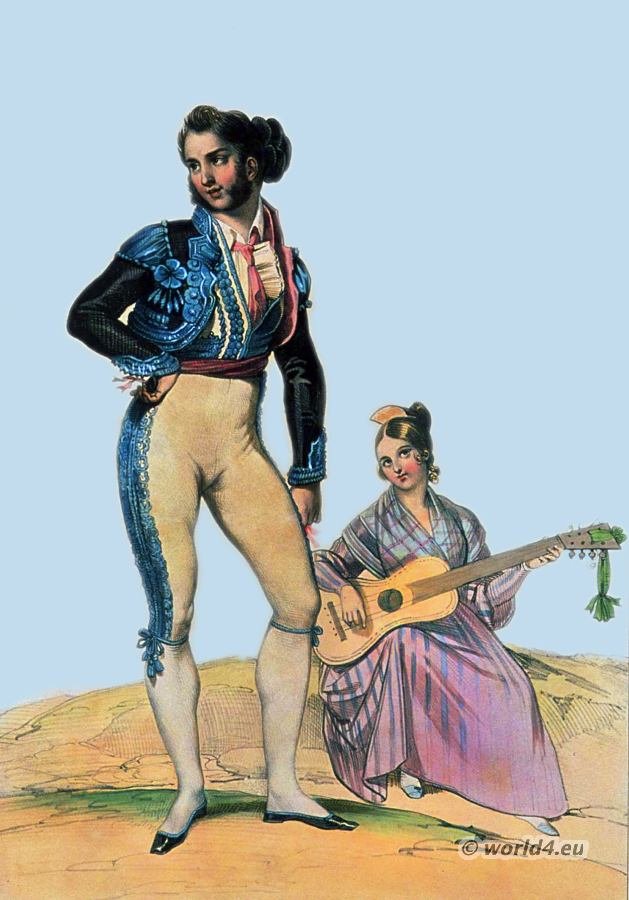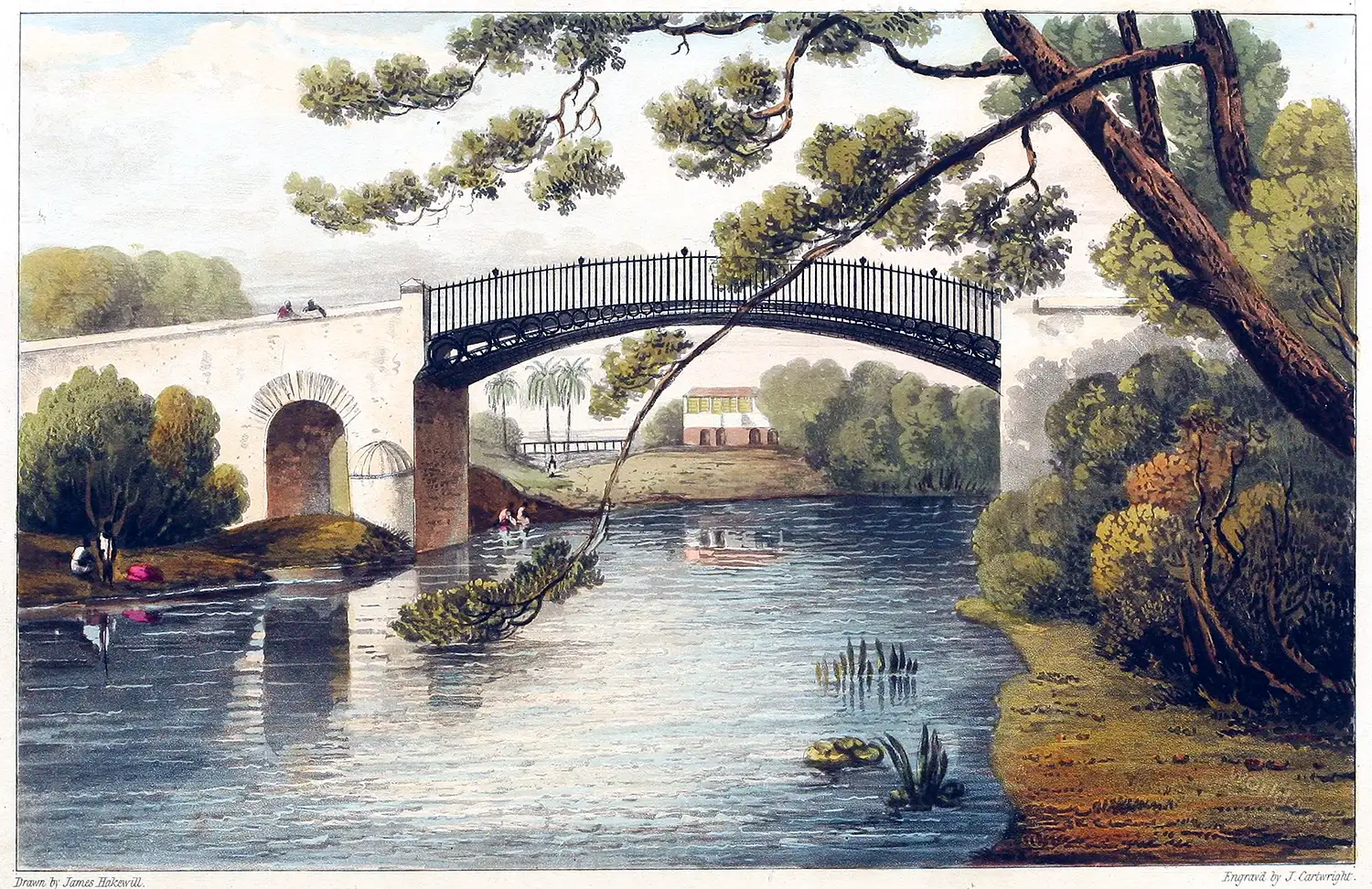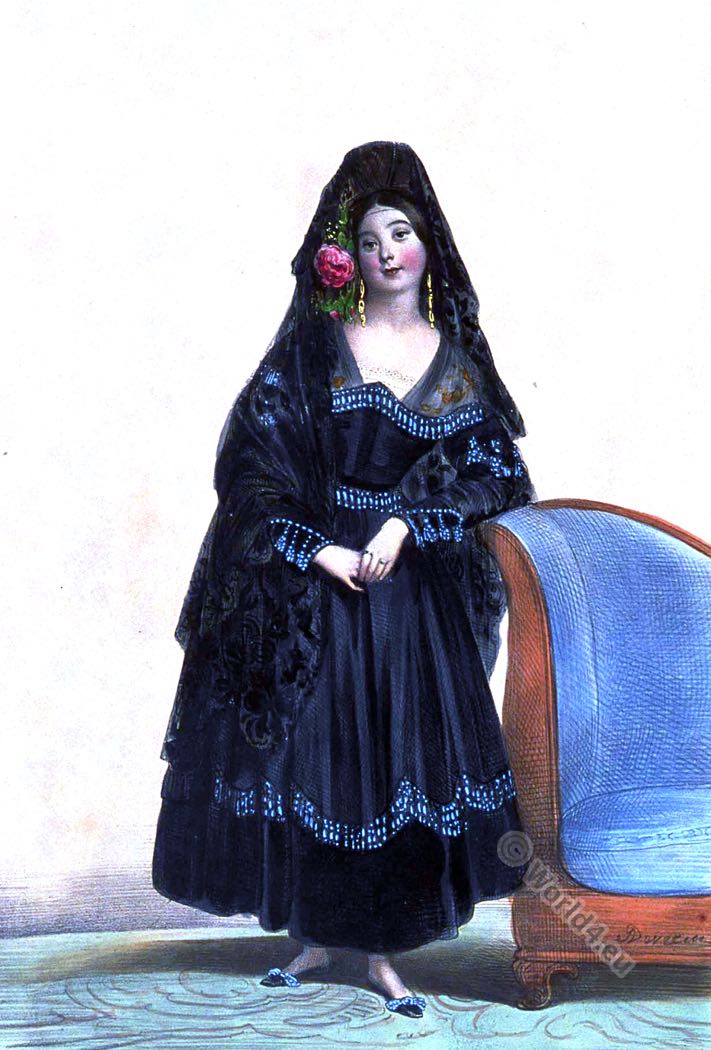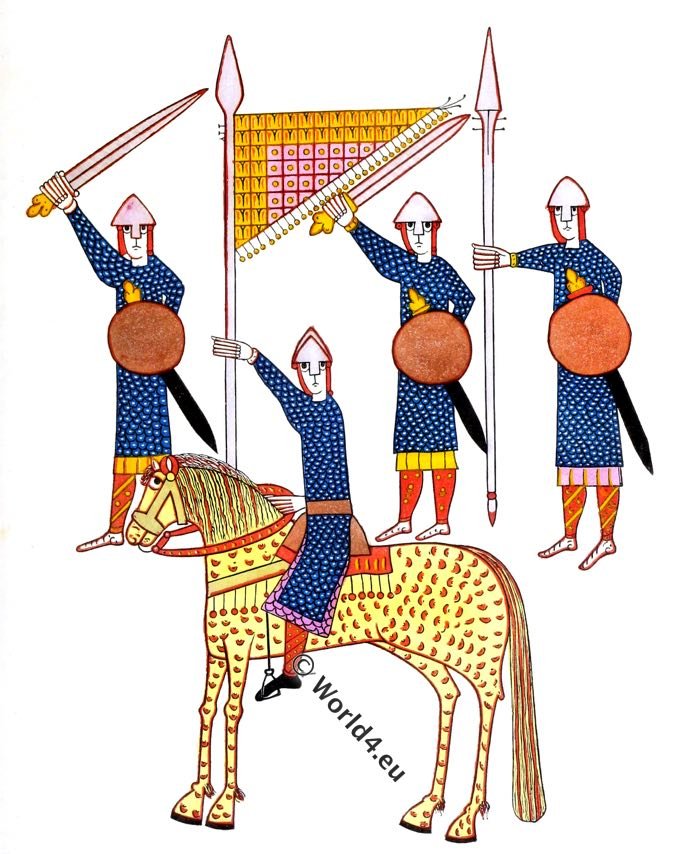HUNTING KNIFE AND SHEATH, EXHIBITED BY D. E. ZULOAGA, OF MADRID.
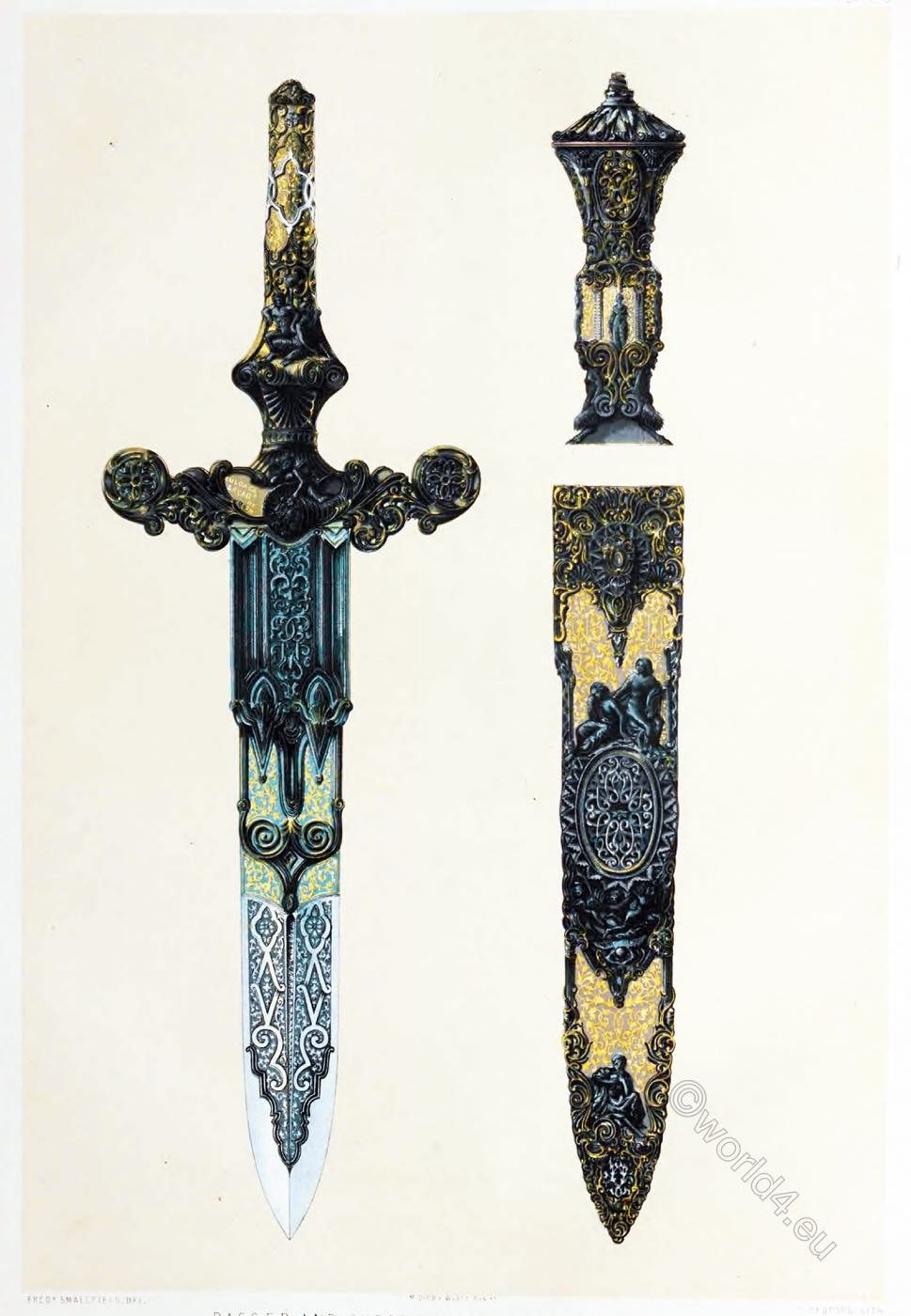
The reputation acquired by Spain for the manufacture of admirable steel may be traced to a remote period, since in the time of Polybius we learn that the hastati, or Roman spearmen, carried upon their hips Spanish swords. The manufacture appears to have been early carried on both at Toledo and Bilbao by the Spaniards, who possessed the raw material in its highest perfection in the rich mines of Biscay, and in many other parts of the country. From the refined knowledge of the art of metal-working early acquired by the Saracenic race, of which such ample evidence is given by the wide-world celebrity of the Damascus blade and the exquisite Moussoul or Mosul inlaying, there can be no doubt that Spain acquired those processes which caused her weapons to be eagerly sought after through out the middle ages. From A. D. 712, when Toledo was taken by Tariq ibn Ziyad, after the battle of Guadalete *), until A.D. 1085, that city, with the exception only of Cordoba, ranked as the principal centre of Moorish intelligence and magnificence; and when, as the earliest as well as the most important see in the Peninsula, it subsequently became the residence of the Castilian kings, its population increased to 200,000, and its fabrication of arms extended coincidently.
*) The battle of Guadalete was fought in 711 in an unknown place in the south of Andalusia, between the Christian Visigoths of Hispania under their king Roderic and the invading troops of the Muslim caliphate of the Umayyads, which consisted mainly of Berbers and some Arabs under the commander Tariq ibn Ziyad. The battle lasted eight days (July 19-26) and was the culmination of a series of Berber attacks and the beginning of the Umayyad conquest of Hispania. In the battle, Roderich lost his life along with many members of the Visigoth nobility, paving the way for the conquest of the Visigoth capital Toledo.
During the middle and latter portion of the fifteenth century the royal manufacture was at its highest state of perfection, and rivalled successfully the celebrated establishments of Ferrara and Milan. In the Hôtel Cluny collection at Paris, and the “Armena Reale,” at Madrid, evidence of the perfection of the national workmanship of that period may be traced. In the latter collection especially, a tolerably complete chronological succession of objects may be found, illustrating the mingling of Moorish with Spanish design and process, at various points in the history of the two races.
The specimens of sword and dagger blades exhibited by the Royal Ordnance of Toledo, and the exquisite damascene work of Signor Zuloaga, bear testimony to the fact, that the “right hand” of Spain has not forgot “its cunning,” and that in the midst of revolution she has yet been enabled to preserve in full perfection the skill which made her “Toledos” and “Bilbos” celebrated throughout the world.
Mr. Inglis, in his Travels, furnishes a poor description of the manufactory, but we have been given to understand that since the period of his visit very important changes have taken place, and that the whole has now been placed upon a new and extended footing. In describing other objects of a somewhat similar nature, we shall hereafter take occasion to allude to the various processes by which the beautiful inlaying in gold and silver which decorates the couteau de chasse, engraved in this Plate, have been effected; for the present we shall only offer a few remarks on the xarious forms of those objects on which the skill of Spanish cutlers was engaged at different periods of history.
The original Spanish gladius used by the Romans was about twenty inches long, and was of steel, straight, double-edged, and cut-and-thrust. In the early centuries of the middle ages, the European sword gradually lengthened until it grew into the long, straight sword of the Bayeux tapestries. Every soldier carried with him, in addition to his sword, a sort of knife (coltellus), used generally for his food, but sometimes as a weapon also. Daggers were occasionally worn, but principally as an indication of nobility. As mail-armor was made stronger, swords were increase in weight and size, until they grew to such a length as to require to be slung on the back instead of being attached to the hip. The unwieldiness of this sword causing it to be rather difficult to kill a man after he had been cut down on the field of battle, the French, in the thirteenth century, introduced the épée à l’estoc, or stabbing-sword; this subsequently became known throughout Europe as the miséricorde, and was regarded as a necessary accompaniment to the large sword of battle.
When plate-armour became universal in the latter part of the fourteenth century, single-handed swords were found insufficient to make much impression, and hence arose the great two-handed swords, which obtained especial favour in Germany. As the whole of the body was now encased in iron, it was only through the meeting-points of the various pieces of armour that a coup de grace could be given to a fallen knight; the blade of the miséricorde was therefore made very thin, and its point sufficiently fine to penetrate the smallest interstice. It was partly with the heavy two-handed swords, partly with their lances, that the Spanish cavaliers finally achieved the expulsion of their more lightly-clad antagonists the Moors. Up to that epoch, it was principally in the fabrication of their crooked scimetars and daggers that the Moors had excelled; and in that of their lighter swords of state, the Spaniards. As very heavy body-armour was relinquished piece by piece, light swords came into fashion, and strong indeed must have been the quilted doublet that could withstand the thrust of a Bilbao or Toledo rapier. First adopted by the French as the épée de Passot, their use spread rapidly throughout Europe, and it was in the form of the thin, straight small-sword, with a blade of exquisite temper and a handle of the choicest design, that the Spanish swords obtained their greatest popularity.
That a wide demand for Spanish weapons is likely to revive, there can be little doubt, so long as a Signor Zuloaga continues to lavish upon them the exquisite workmanship he exhibits. This factory is increasing rapidly, since, though only established five years, it already employs constantly no fewer than thirty first-class artisans.
Source: The industrial arts of the nineteenth century. A series of illustrations of the choicest specimens produced by every nation, at the Great Exhibition of Works of Industry, by Sir Matthew Digby Wyatt and Eliza Paul Kirkbride Gurney. London: Day and Son 1851.
Related
Discover more from World4 Costume Culture History
Subscribe to get the latest posts sent to your email.

